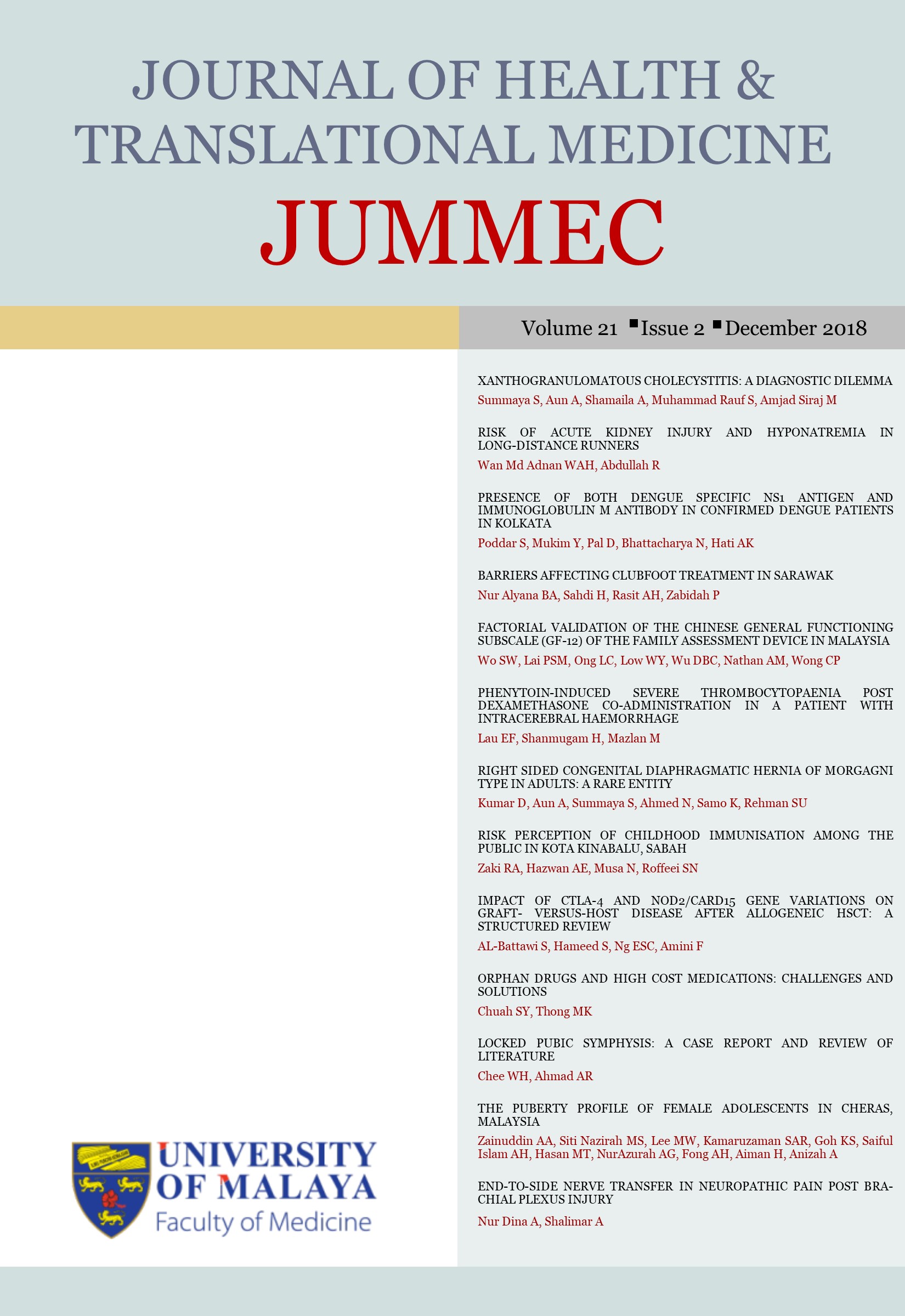BARRIERS AFFECTING CLUBFOOT TREATMENT IN SARAWAK
Keywords:
Barriers, Congenital Talipes Equinovarus, Clubfoot, TreatmentAbstract
Background: Congenital talipes equinovarus (CTEV), also known as clubfoot is the most common lower limb congenital deformity among paediatric patients. The outcome of starting clubfoot treatment early is very promising. Patient retention throughout the treatment programme is challenging in Sarawak. In this study, we explored the barriers that parents/caregivers face when seeking clubfoot treatment in Sarawak, Northwest Borneo. A better understanding of the barriers will provide us with the information to formulate effective programmes for clubfoot treatment in this region. Methods: We conducted a questionnaire-based quantitative cross-sectional descriptive survey. We adapted a set of closed-ended questionnaires originally designed by Kazibwe and Struthers in a study done in Uganda in the year 2006. Results: A total of 53 parents/caregivers of children with idiopathic clubfoot were recruited in this study, with 16 defaulter cases and 37 non-defaulter cases. We found 2 statistically significant barriers to clubfoot treatment in Sarawak, with p-value < 0.05, namely the geographical factor (p = 0.019) and logistic factor (p = 0.017). Conclusion: Barriers to clubfoot treatment that influence the compliance to treatment identified in this study are long distance travel, logistics limitations, uncooperative patients during treatment, parents/caregivers having other commitments, unsupportive family members, lack of understanding regarding clubfoot and its treatment, inadequate specialists in clubfoot, traditional socio-cultural beliefs and practices and economic constraints. Enhanced understanding in this matter will guide us in devising culturally admissible ways to increase awareness in parents/caregivers regarding clubfoot and its treatment. A sustainable national clubfoot program will be very beneficial in providing a holistic approach to tackle barriers to treatment in our country.
Keywords : Barriers, Congenital Talipes Equinovarus, Clubfoot, Treatment
Downloads
Downloads
Published
Issue
Section
License
All authors agree that the article, if editorially accepted for publication, shall be licensed under the Creative Commons Attribution License 4.0 to allow others to freely access, copy and use research provided the author is correctly attributed, unless otherwise stated. All articles are available online without charge or other barriers to access. However, anyone wishing to reproduce large quantities of an article (250+) should inform the publisher. Any opinion expressed in the articles are those of the authors and do not reflect that of the University of Malaya, 50603 Kuala Lumpur, Malaysia.


